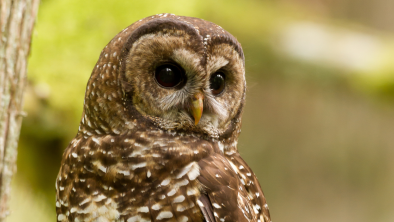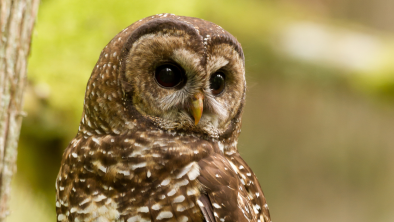Conservation groups ask for better animal welfare legislation
The Vancouver Sun

It’s been a challenging year for wildlife in B.C., and swift legislative change is critical. These were the concerns voiced in Vancouver on Friday by delegates at the 2015 Living with Wildlife Conference.
Conservation biologists, academics, politicians and humane organizations met at the national meeting, hosted by the Association for the Protection of Fur-Bearing Animals, to reflect on the current state of wild animal welfare legislation in Canada.
A common frustration was shared by all stakeholders in the room: Why does the B.C. government allow the trophy hunting of grizzly bears and the cull of wild wolves to continue, despite a lack of public support and no scientific evidence to prove these deaths are necessary?
Speakers took turns to explain why the provincial government’s stance makes no sense.
“It’s a wildlife management fail,” said Gwen Barlee, policy director for the Wilderness Committee, referring to the fact that B.C. has no endangered wildlife act. British Columbia is home to more than 1,900 species that have been designated as being at risk, and yet 89 per cent of these species are not protected under legislation.
“B.C. has the richest biodiversity in all of Canada,” added Barlee. “We are one of the last safe havens for grizzly bears, but their habitat is shrinking and they continue to be hunted, and so not even B.C. is truly safe.”
While the B.C. government contends that its support for trophy hunting and wolf culls is based on science and will lead to the conservation of other species such as caribou, academics at the conference disagreed.
“The population data that are being used to support the allocation of grizzly bear trophy hunting permits are not always based on actual field data and often are not peer reviewed,” said Heather Bryan, a Hakai Institute post-doctoral biologist with the Raincoast Conservation Foundation and the University of Victoria.
Bryan added that while the government insists their management plans work, they have yet to produce any peer-reviewed data to support that hunts and culls do anything positive for wildlife. Rather, Bryan quoted data, which indicated that a recent cull of 700 wolves in Alberta had no measurable effect on caribou populations. “This is because cougars are the biggest source of caribou predation, not wolves,” Bryan said.
Lesley Fox, executive director for the Association for the Protection of Fur-Bearing Animals, is similarly frustrated.
“Not only is the science clear that trophy hunting and wolf culls are highly detrimental to wild animal populations and animal welfare, the public are strongly against it, too.”
“It undermines the democratic process when you have all of these organizations acting in unison, supported by third-party polls and independent scientists, that these voices go unheard. It … is discouraging for voters. It makes people feel apathetic and angry because they feel that their elected officials aren’t listening.”
Raincoast Conservation Foundation is looking at more creative solutions to protect B.C. wildlife, Bryan said. “Since 2005, the Raincoast Conservation purchased 24,000 square kilometres of land along B.C.’s west coast, and a further 3,500 sq. km in 2012, to prevent trophy hunting of grizzly bears by non-resident hunters.”


